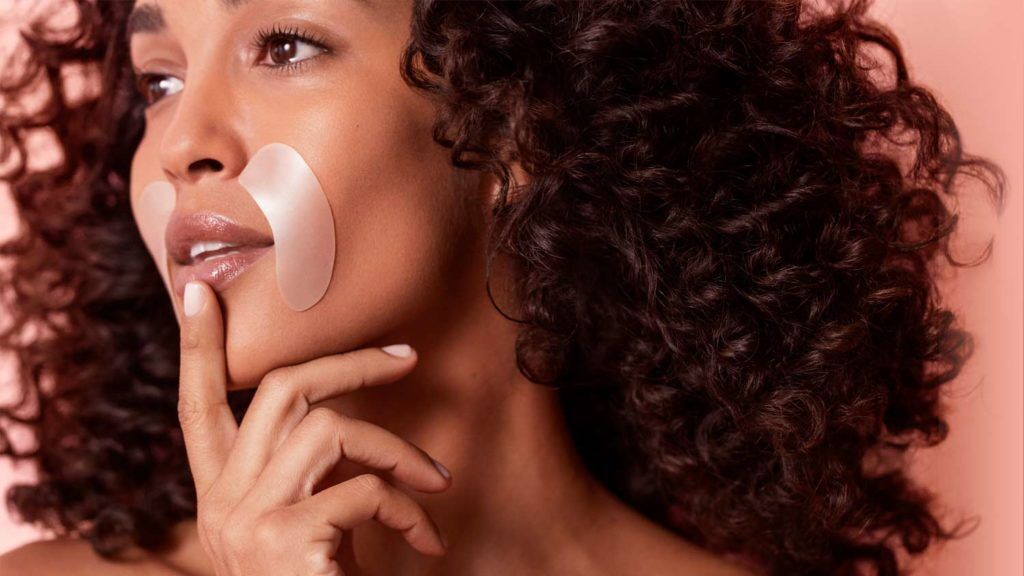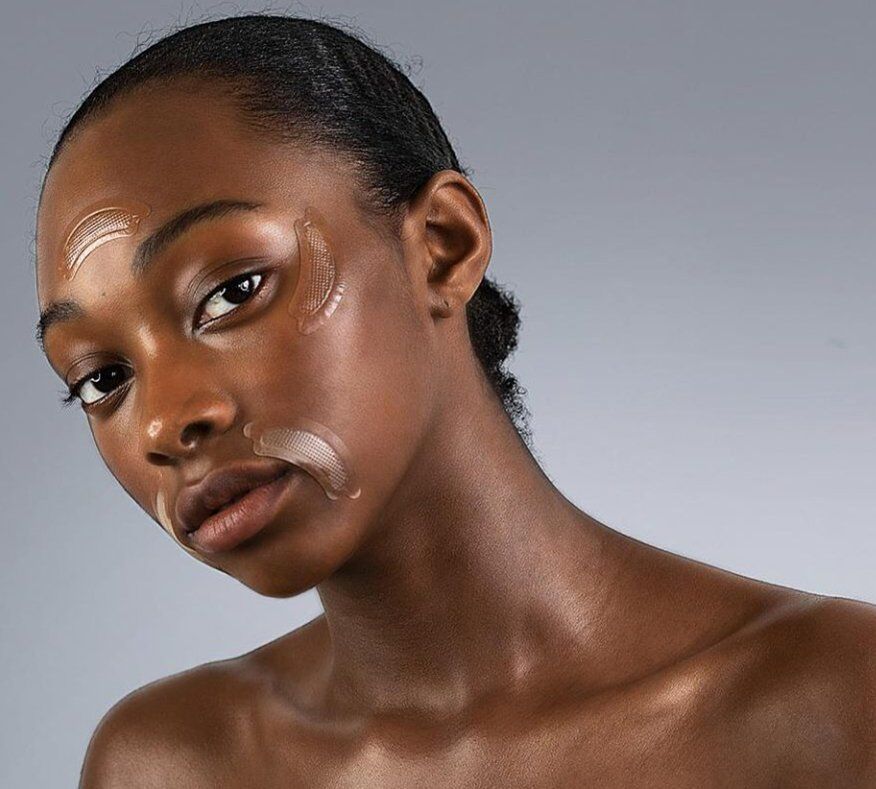
9 Ways to Treat Smile Lines
Isn’t it a crazy world that the more we smile and laugh (the innate signs of joy and happiness), the more we get stuck with deep lines around our mouths, known as smile lines, and when they get deeper, nasolabial folds? “These are the lines that extend from either side of your nose down toward the corners of your mouth,” says Dallas dermatologist DiAnne Davis, MD. “They are most prominent when you smile or laugh, and they tend to become more visible with age as our skin becomes thinner.”
Other factors that can cause more pronounced nasolabial folds include genetics (thank your mom and dad), smoking, environmental pollutants, and sun exposure. “UV exposure speeds up the aging process, leading to wrinkles and an uneven skin texture,” adds Dr. Davis. “Weight gain and weight loss can also play a role.”
So which treatment approach should you take if your smile lines have become that thing you can’t stop staring at in the mirror and you want them to disappear? Beverly Hills, CA dermatologist Ava Shamban, MD says it depends on the severity of the lines. “Topical skin-care products can help temporarily in many cases if the wrinkles are mild or moderate, but if they are deeper—they extend from the corners of your nose to the corners of your mouth like fully demarcated parentheses with resulting shadows around your mouth—in-office procedures like fillers and lasers will be necessary for a noticeable result.” These are nine treatments to know about if smile lines are a concern.
Topical Skin-Care Treatments You Can Use at Home
For those people whose smile lines fall on the more moderate-to mild side, Dr. Shamban says there are topicals that may help alone or in combination for temporary improvement. These are ones to try.
1. Acid-Based Skin-Care Products for Smoothing and Plumping
“A chemical or physical exfoliant—combinations of alphahydroxy acids, like lactic acid, and betahydroxy acids, like salicylic acid—will help smooth the area,” says Dr. Shamban. “Polyglutamic acid will infuse hydration to keep the skin plump to make lines less visible around the mouth.” Vitamin C is also technically an acid—ascorbic acid—and Dr. Davis recommends incorporating good vitamin C product in your routine for not only the collagen-boosting effects that can benefit the smile lines, but also the antioxidant properties.
2. Medical-Grade Silicone Patches
Dr. Shamban says medical-grade silicone patches can create an environment that helps skin retain moisture, and thus keeps the area hydrated and appearing plumper, reducing the visible signs of fine lines and wrinkles. Two types of these patches that we like, which are made specifically for smile lines, are SiO Beauty Eye & Smile Patches ($34) and Frownies Corner of Eyes & Mouth Wrinkle Patches ($24).

3. Microneedling Patches
“Patches with micro-cones or ‘needles’ infused with peptide serums, retinol and hyaluronic acid or polyglutamic acid can give smile lines a temporary boost and smoothing effect,” says Dr. Shamban. Two to try: 111SKIN Meso Infusion Overnight Micro Mask ($180), which contain micro-cones that penetrate the skin at 0.3 millimeters to deliver hyaluronic acid and vitamin C, and Peace Out Wrinkles Microneedling Patches ($24), which contain retinol, peptides and vitamin C.

4. Retinol and Vitamin A Derivatives
“The best topical products to address smile lines are those that are the vitamin A derivatives,” says Salt Lake City facial plastic surgeon P. Daniel Ward, MD. “These products, including retinoids, retinol, etc., are going to be the very best option, as they help smooth the appearance of lines and boost collagen and elastin. I like the FormRX skin-care line, which is medical-grade and effective at treating this area topically. Always remember to wear broad-spectrum sunscreen when using retinol—and even if you’re not—as well.”
Beverly Hills, CA facial plastic surgeon Kimberly J. Lee, MD adds that the reason why we get smile lines is because we lose elasticity and collagen, causing the skin and tissues to sag, so products that bolster collagen formation—or slow its breakdown—like retinol, can help delay this process.
5. Peptides
Dr. Shamban says the mix of a 10-percent argireline solution—a biomimetic peptide—and 10-percent Matrixyl—a peptide that has been shown to stimulate collagen production to create thicker dermal tissue over time—also has some mild topical benefits for mitigating wrinkles like smile lines. You may have seen this mix go viral on TikTok last year, dubbed the “Botox Trick.” Dr. Shamban adds, “Cosmetic ingredients like these can interact on some level at the synaptic junction and work well with injectable neuromodulators to help relax muscle contraction to improve lines.”
In-Office Solutions for Longer-Lasting Results
1. Hyaluronic Acid Fillers
“Over the last two decades, hyaluronic acid (HA)‐based fillers have become the material of choice for dermal correction in our soft tissue based on their ability to produce immediate, predictable, and in most cases, natural‐appearing results in key areas of the face like the smile lines,” says Dr. Shamban. “Each brand has a product category with a range of HA filler options in terms of viscosity and density, which, when injected properly, have exceptional outcomes with excellent safety and tolerability profiles for this area.”
“My personal favorite filler for the smile lines is Restylane,” says Dr. Ward. “This is the first non-animal hyaluronic acid filler that was produced—it’s made of non animal–based HA—and I still think it is the best one.” Dr. Shamban also loves Restylane, as well as another classic, Juvéderm, and two newer options, RHA 3 and RHA 4. “RHA is particularly great in this area, and all dynamic areas of the face. It uses a gentle manufacturing process with only a few chemical modifications, resulting in a gel that closely mimics the natural HA found in one’s own skin. They also have a high ‘stretchability.’ Think of it like a trampoline: a material with a spring that expands or stretches and has the ability to rebound with each smile or expression, keeping a natural look. RHA 3 can be used for moderate nasolabial folds, and RHA 4 is best for deeper folds.”
Dr. Lee also points to the efficacy of Juvéderm and Restylane, but says fillers have become extremely sophisticated over the past few years, and now we have a whole gamut of products to work with, each with unique properties. “With faces, I prefer a natural look, so I favor fillers that have some elasticity to accommodate for the dynamic movement of the mouth and laugh lines when talking, smiling or laughing,” she says. “For the smile lines, I like Restylane Refyne and Defyne because they just don’t sit in the laugh lines when talking, but rather they look natural and part of the face.”
2. Biostimulatory Fillers
Another group of fillers known as collagen biostimulators—they boost your body’s own collagen production—provides longer-lasting results than hyaluronic acid fillers. “I like Radiesse, which is made of calcium hydroxyapatite gel and can be used to help erase more moderate smile lines, or even severe ones in some cases,” says Dr. Shamban.
3. CO2 Laser Treatments
“I personally think there is nothing better for smile lines than a CO2 laser,” says Dr. Ward, who uses the Candela CO2RE laser. “CO2 laser treatments often take aggressive settings with multiple treatments, but they work amazingly well. They tighten the skin and also produce additional collagen in the skin to help diminish the lines and pigment in these areas.”
4. Microneedling
Radio-frequency microneedling is another noninvasive option for improving the appearance of smile lines, which involves delivering energy into the skin to stimulate collagen and tighten skin. “Treatments like Vivace and Morpheus8 can help boost collagen and elastin in the area around the mouth for smoother, firmer skin,” Dr. Shamban says.
Find a Doctor
Find a NewBeauty “Top Beauty Doctor” Near you